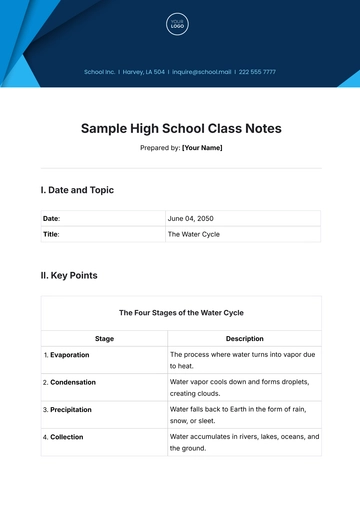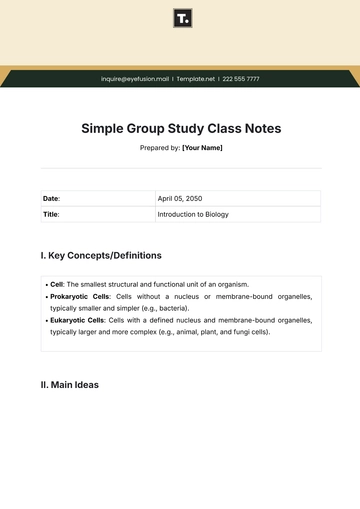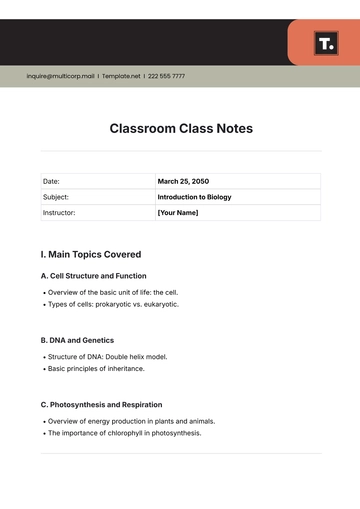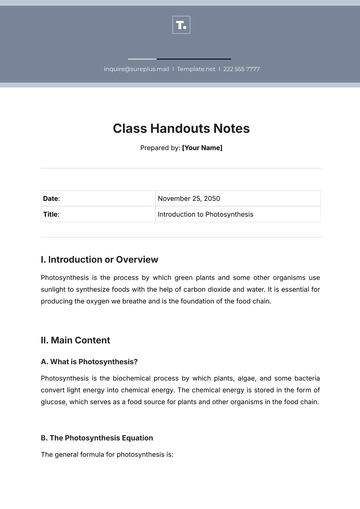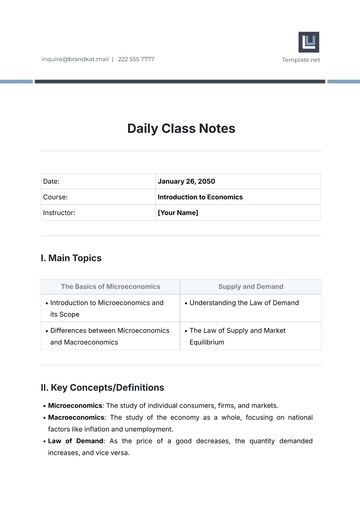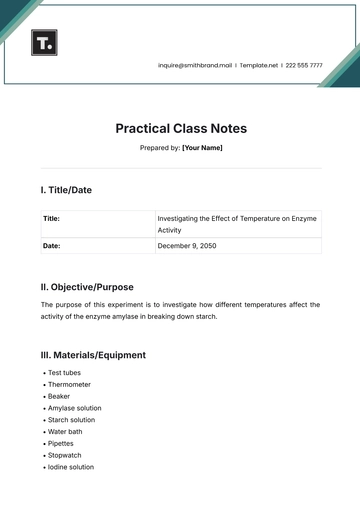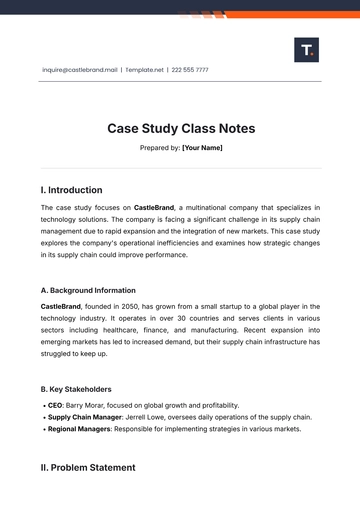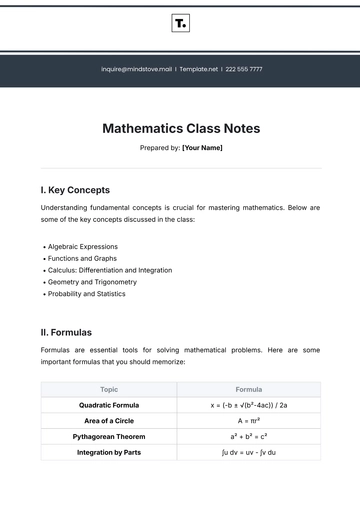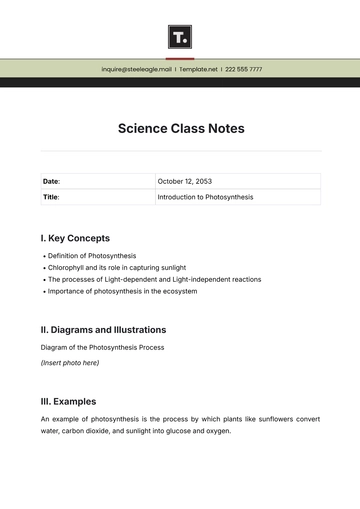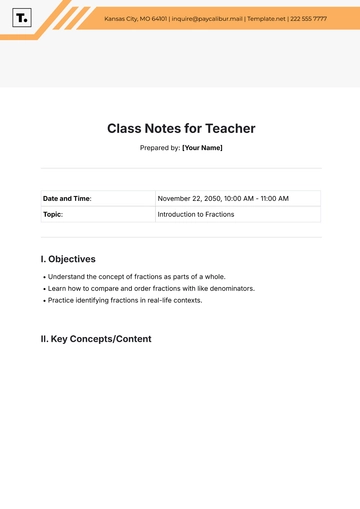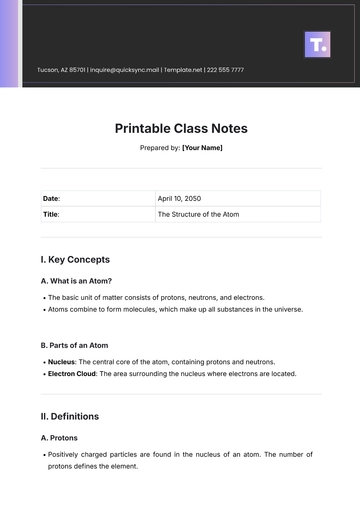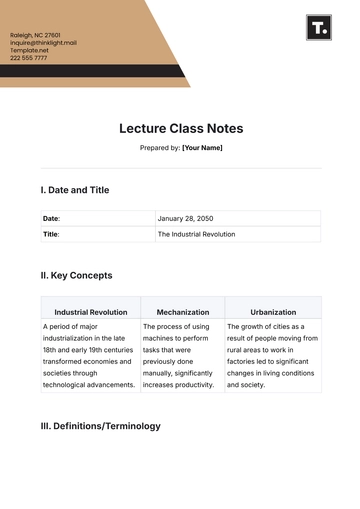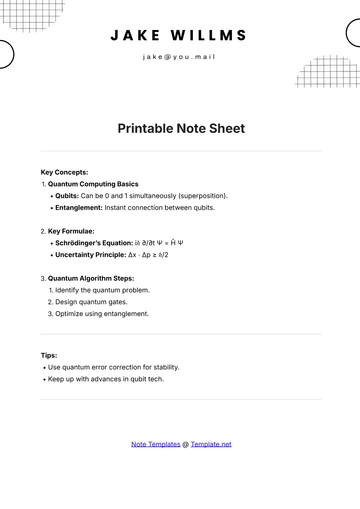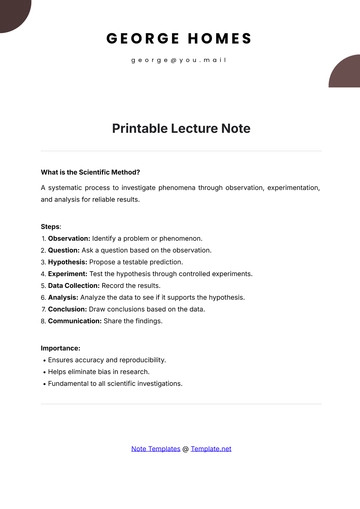Practical Class Notes
Prepared by: [Your Name]
I. Title/Date
Title: | Investigating the Effect of Temperature on Enzyme Activity |
Date: | December 9, 2050 |
II. Objective/Purpose
The purpose of this experiment is to investigate how different temperatures affect the activity of the enzyme amylase in breaking down starch.
III. Materials/Equipment
Test tubes
Thermometer
Beaker
Amylase solution
Starch solution
Water bath
Pipettes
Stopwatch
Iodine solution
Heat source
IV. Procedure
Prepare a water bath at 10°C, 30°C, and 50°C using a beaker and thermometer.
Add 5 mL of starch solution to each test tube.
Add 5 mL of amylase solution to each test tube.
Place the test tubes in the respective water baths and start the stopwatch.
After 5 minutes, add a few drops of iodine solution to each test tube to check for starch presence.
Record the time it takes for the iodine to no longer turn blue (indicating starch has been broken down).
V. Observations/Results
At 10°C, the reaction was slow, and the iodine remained blue for over 10 minutes.
At 30°C, the reaction was moderate, and the iodine turned colorless after 5 minutes.
At 50°C, the reaction was the fastest, and the iodine turned colorless within 2 minutes.
VI. Analysis/Discussion
The enzyme amylase worked best at 30°C, as seen by the quickest breakdown of starch.
At 10°C, the activity was slower, likely due to the lower temperature reducing enzyme kinetic energy.
At 50°C, the enzyme activity increased briefly but may have started to denature, reducing effectiveness.
The optimum temperature for amylase activity appears to be around 30°C.
VII. Conclusion
The enzyme amylase is most effective at around 30°C for breaking down starch. Both very low and very high temperatures negatively affect its activity.
VIII. References
Smith, J. (2050). Introduction to Biochemistry. Oxford University Press.
Brown, T., & Taylor, L. (2050). Fundamentals of Enzyme Activity. Science Journal, 42(3), 56-67.
Note Templates @ Template.net


